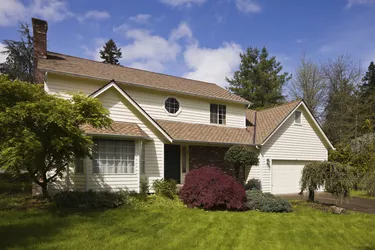
You are moving and you've found a great house to buy, but there's a problem. Your old property hasn't sold yet. That means you are still making mortgage payments and you can't use the equity in your present home for a down payment. One option to think about is a bridge loan. Bridge loans carry risks, but they can be a way to secure a new property when you don't have time to wait for the old one to sell.
Function of a Bridge Loan
Video of the Day
Bridge loans are short-term financing vehicles intended to cover a gap between the time you purchase a new home and sell the old one. Six months is a typical time frame for a bridge loan. Homeowners use bridge loans to obtain cash for a down payment on a new house quickly. Some homeowners choose bridge loans to pay off mortgages and forestall foreclosure. The bridge loan buys these distressed homeowners more time to sell the property instead.
Video of the Day
How a Bridge Loan Works
Suppose you are moving because your employer has transferred you. You go to a lender and take out a bridge loan against the equity in your current house to use as a down payment on a new house. The amount you borrow includes points, fees and interest points. Terms of a bridge loan vary. For example, some lenders allow you to borrow enough to pay off your old mortgage. Your current home is collateral for the bridge loan. When the current property is sold, the money pays off the bridge loan.
Calculating Bridge Loans
To calculate a bridge loan, you need to know how much money is required as a down payment on the new property as well as the outstanding balance of the current mortgage. You also need to know the fees and points the lender will charge. Suppose your home is appraised at $250,000 and the lender will allow up to 80 percent of that amount to raise cash and pay off the old mortgage, or $200,000. The current mortgage balance is $150,000. Assume this lender charges 2 points, meaning 2 percent of the bridge loan amount of $200,000. Add 1 percent in prepaid interest and fees. Points and fees come to $6,000. Subtract $6,000 and $150,000 from the $200,000 loan amount. You have $44,000 cash to make a down payment on the new house.
The Upside and Downside
If you need to get out of your old home and mortgage quickly, a bridge loan can be a lifesaver because it can raise the cash to buy the home you want before another buyer beats you to it. However, bridge loans can be expensive. In the example above, the cost is $6,000 plus the interest that accrues until the loan is paid off. Bridge loans also carry risk. Your existing home is collateral and can be foreclosed on if the loan isn't paid. That can happen if the property doesn't sell before the bridge loan comes due or if the housing market turns sour and you are unable to sell for enough to pay off the bridge loan.